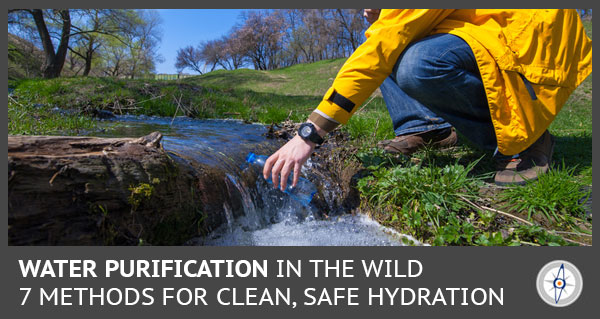
There are four pillars of survival that must be achieved to stay alive. These include food, water, fire, and shelter. After hypothermia, dehydration is the number one killer in survival situations. Not only can you die from dehydration itself, but this condition can also speed up other conditions such as hypothermia or hyperthermia.
A lack of water can lead to disorientation. This might cause a person to get turned around in the wild. Dehydration can also cause dizziness, potentially leading to injuries. Under normal conditions the human body can survive three days without water. However, with extreme heat or physical activity a person may only make it a few hours. This means that finding and purifying water is my first priority in many survival scenarios.
Contaminated Water
Finding water is the first step, but almost all water must be purified. Salt water is not safe to drink as the salt will actually dehydrate you faster. Drinking sea water will cause hallucinations and eventually death. On the other hand, the vast majority of the fresh water on the earth is contaminated by bacteria, parasites, debris, chemicals, and minerals. You cannot assume that water is safe to drink just because it appears clean.
Even spring water can be contaminated my mineral deposits deep within the earth. These contaminants will not kill you immediately, but over time they will make you sick. Drinking tainted water will cause vomiting and diarrhea that will lead to even further dehydration in the end.
Water can be found just about anywhere on earth. Between rivers, lakes, streams, ponds, and swamps there is almost always a source nearby. Even in the desert, water can be found in the ground. So once you find a viable source of drinking water, how will you purify it? These techniques are what we will cover in this article. If the time ever arises that you must purify water, these strategies will help keep you alive.
Methods
When considering how to purify your water, there are several variables to consider. The biggest should always be which contaminants you think you may need to eliminate. Some methods are better for killing bacteria, while others are better for eliminating chemicals. Removing debris is sometimes a priority, while mineral composition is sometimes more important.
Be aware that no water purification method in the wild is 100% effective. Some come very close, but there are varying degrees of purification. Always choose the method that will give you the best chance of survival for your situation. There is no method that will be perfect for every situation.
Boiling
Bringing water to a boil is one of the oldest methods by which man has purified water. This method has been used almost as long as man has been able to create fire. Bringing water to a boil creates temperatures that eliminate bacteria and microorganisms.
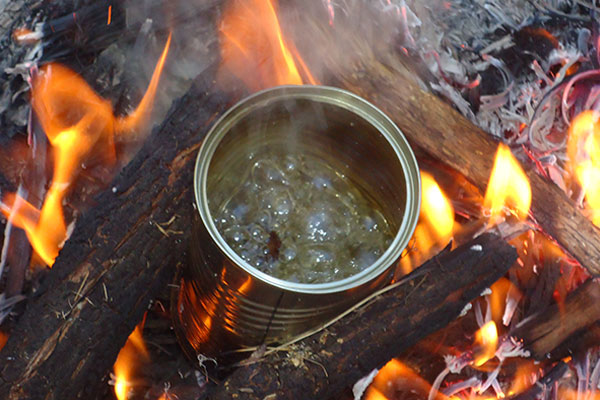
For years it was thought that water must boil for ten minutes or more for purification, but recent studies show that the water must only be brought to 212F for it to be safe. The water should also be filtered to eliminate any debris. Be aware that boiling will not eliminate minerals or chemicals in the water. If you can create fire and have a container of some kind, boiling may be your best option.
High Grade Filters
One of my favorite options for water purification is to take a filter with me. The best filters on the market can purify water to 99.999% purity. This helps with debris, bacteria, microorganisms, and minerals. Filters can help with some chemical contents, but are not always effective.
There are several styles of filters you can purchase. Many people like straw style filters because they are small and lightweight. You can simply dip the end of the filter into your water source and start drinking. However, you would have to get down on your belly if you do not have a container. Also, drawing water through the straw can be a little rough. Mine sometimes leaves sores on the inside of my mouth.
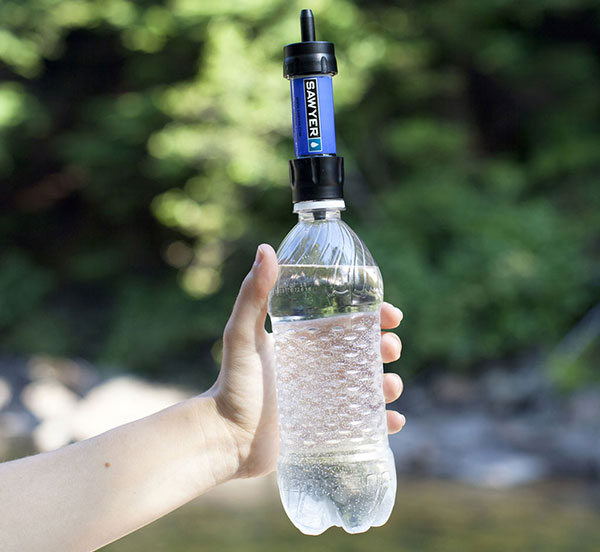
I prefer my water bottle that has a filter built into the lid. This allows me to dip the bottle in a stream, screw on the lid, and then drink from the spout. It is easier to use and keeps me off the ground. It also allows me to take a good amount of water with me if I have to leave the water source. You can buy metal water bottles with filters that will allow you to boil the water as well.
Gravity Filters
Finally, there are gravity filters that allow you to filter large amounts of water. These typically have a plastic bladder that you fill with water. You then hang the bladder with a filter down below. Gravity will push the water through the filter giving you gallons of clean water. These are great if you are staying in one place or if you have a group of people to keep hydrated.
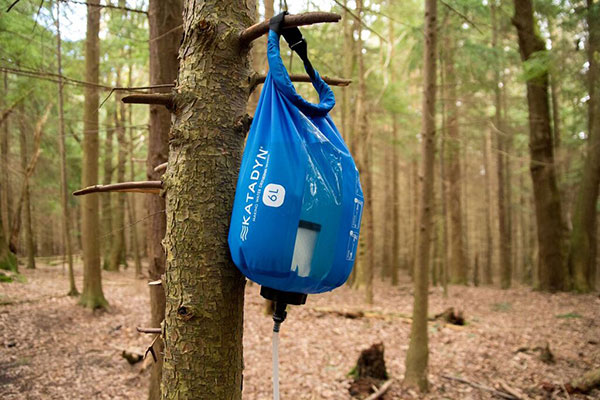
With any filter you have to be careful not to let it become clogged. Many suggest that you blow the water out of the filter when finished using it to ensure debris is removed. My straw filter also has replaceable screens to help reduce the debris that hits the filter. These are one of the most thorough ways to purify water.
Chemical Purification
There are certain chemicals that will eliminate bacteria and microorganisms in water. These would include iodine and bleach. They are not products that should be consumed over a long period of time, but for a short survival situation they are fine. A few drops of either chemical in a bottle of water will kill the living organisms that could make you sick. You simply apply the chemical, let it set for five minutes, shake it up, and then wait 30 minutes. Then the water is good to drink.
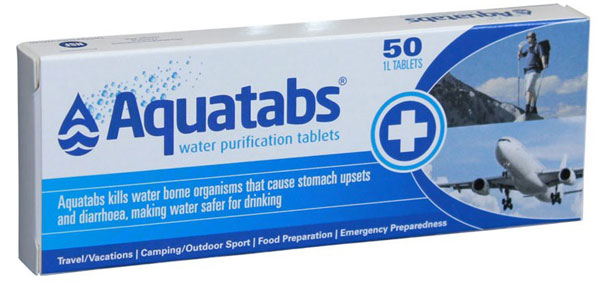
I prefer to take iodine tablets with me versus carrying liquid chemicals. For just a few dollars you can buy a small vial of these tablets. Just dropping two in a bottle of water is the same as a few drops of iodine. The water should still be filtered for debris if possible. This method does not help with removing minerals or other chemicals. Also, if used for several weeks the chemicals themselves could start to make you sick.
Homemade Filter
If you did not bring any products with you for water purification and you cannot get a fire started, you could still build a filter. You will need a container of some kind, and a plastic water bottle works well. Thankfully plastic bottles can be found almost anywhere you go.
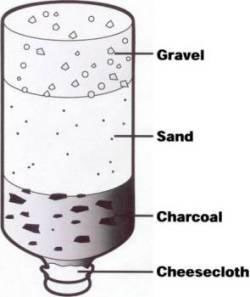
Three layers are needed to give you the best chance of purification. You will need a layer of gravel, a layer of sand, and a layer of charcoal with a cloth screen over top. The cloth will eliminate the large debris. As the water trickles through the gravel and sand, any other debris is removed. The charcoal helps eliminate chemicals, bacteria, and parasites. This is not nearly as effective as using a high grade filter, but it does help. If a homemade filter can be used along with boiling, that would be a solid plan.
Ultraviolet Light Purification
Many people do not realize this, but simple UV light from the sun can help purify water. You need strong sunlight, a thin plastic bottle, clear water, and time. This will not work on a cloudy day, so move on to other options if the sky is not clear. Glass or colored plastic will not work either. Also, if the water is muddy or murky at all this method is dangerous.
If all the other variables are in your favor, you can fill your plastic bottles with water and set them out in the sun for at least six hours. The light will kill some bacteria and microorganisms. This method does not eliminate debris, chemicals, or minerals. If it can be combined with filtering or boiling, that is best. This method would be a last resort if there are no other options.
Proximity Well
If you cannot build a fire, have no filter, have no bottles or containers, and have no chemicals, a proximity well is your only other choice. This method requires nothing but your bare hands and some time. Find a spot at least three feet from the edge of your water source. Use your hands or a stick to start digging a hole.
The base of the hole needs to be at least a few inches deeper than the surface of the water in your source. You will start to notice a little water seeping into the bottom of your hole. Let it fill up as gravity will push the water from your source through the earth and into your well. The ground itself will filter some of the contaminants out of the water. Initially the water will be cloudy or muddy. Let it set for 30 to 60 minutes and the debris will settle to the bottom. Then you can take a drink.
Finding Safe Water
There are definitely better places to find drinking water in the wild. Even if you plan to purify the water, you want your original source to be as clean as possible to begin with. This really just comes down to common sense. You never want to collect water where chemicals may be present. This would include areas near roads, near factories, near golf courses, or near farms. Remember that everything flows somewhere. There could be a contamination source three miles away, but if it rains that contamination could make it into your stream.
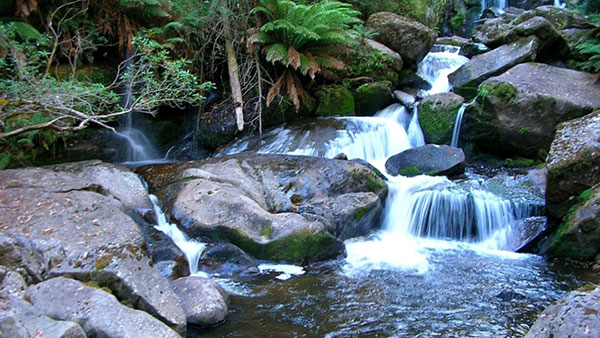
Debris in water is visible and is one more contaminant that should be avoided. If you have a choice between muddy water and clear water, clear is always better. If you have a choice between running water and standing water, running is always better. Algae or other plant debris in the water also must be removed, so try to stick to areas without plant material.
When it comes to bacteria and parasites, animal activity is the number one contributor. When animals repeatedly come back to the same standing water to drink, their feces ends up in the water as well. With standing water, the temperature is typically warmer allowing for bacteria and parasites to grow and multiply. This is one of the most dangerous scenarios you can face with water purification. Drinking this type of water without purification almost guarantees an illness.
Water without Purification
Spring water can be a safe source of water to drink without purification, but not always. There is still the potential for chemicals or minerals to seep into spring water. It is normally easy to tell if this is an issue. If the water has a foul smell or a bitter taste, it is not safe to drink. Otherwise, you should be fine to drink water from a spring.
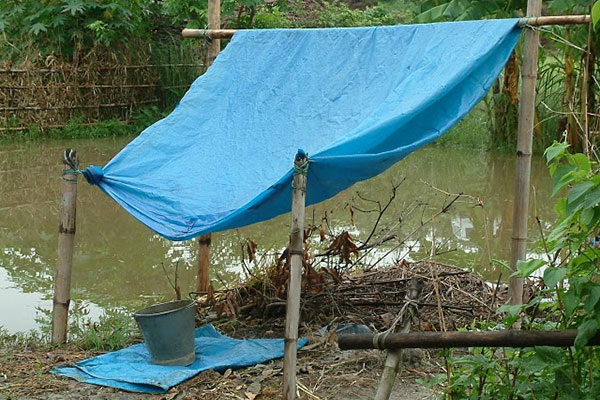
Rainwater is actually your safest bet for water that may not have to be purified. Yes, there can be impurities in rainwater but your chances are slim. The key is trapping the water before it runs over a surface that could add impurities. This can be done naturally when rocks or plants collect small pockets of water.
Your best bet is to use plastic to create a rain trap. With a small dip in the ground, the plastic can be held in place with rocks to collect over a large surface area. Then it can be gathered into a smaller container. You may have to dig out an area for a rain trap, but remember that shallow and wide is better for collecting rain than deep and narrow.
Final Thoughts
When it comes to water purification, preparation is key. It is not only about knowledge, but also about having the right supplies with you. Having a filter or a way to boil water is a huge advantage. As you go down the line of options for water purification, the fewer supplies you have the more difficult it is to get make water safe to drink. You can also never assume that you will find a spring or have rain to collect. Be prepared.
If you find yourself in a survival situation, remember the risk of dehydration. Also remember the risk of drinking tainted water. Take the time to find water and take the steps to purify it before drinking. Staying hydrated will help you in every step of your journey, and hopefully help you find your way to safety.

1 comment
I carry a 10×25 roll of visquean plastic sheeting in my bug bag and a number 10 coffee can as well as a normal size soup can, several lengths of 550 cord. The visquean sheeting and 550 I can make a very comfortable shelter as well as a rain trap, the cans can be used to boil water and cook in, (also have mint tea and bullion cubes in my bag because boiled water is just bland) blast match, a spark force, dryer lint, vasaline cotton balls. So I have Shelter, Fire, and water procurement. Also a 2 liter camel back that I refresh every 2 days.
Comments are closed.